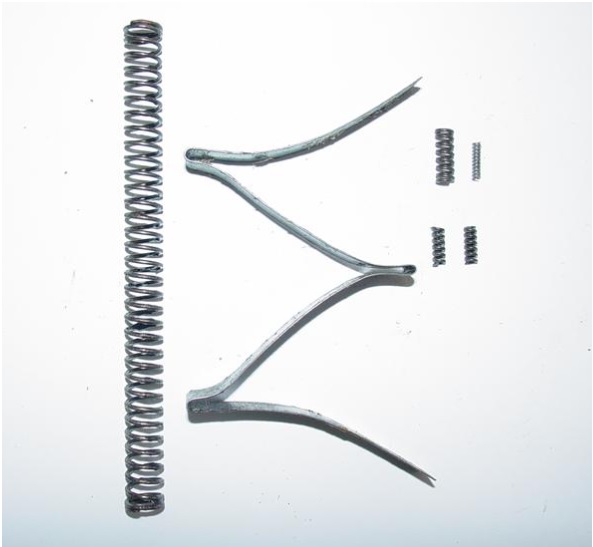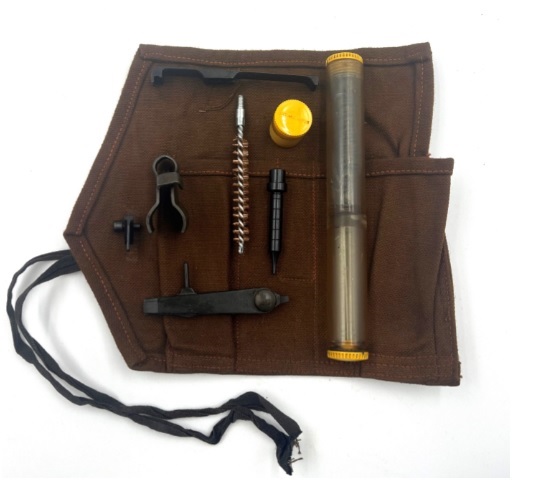Low-Number M1903 Rifles and Springfield Parts
Jun 26th 2024
You’ve heard of the M1903. It’s the rifle that was “official issue” to the American Expeditionary Force in the First World War (despite the fact that many Americans carried Lee-Enfield rifles because the Springfields were in short supply).
It is a legendary rifle with a mystique on par with the Garand. Although, the 1903 is much older; if you get one, there’s always a chance it could be in need of serious rework.
With that said, let’s talk about “low number” 1903 rifles and Springfield parts you might need to replace.
About “Low Number” M1903 Rifles
According to the Civilian Marksmanship Program, or CMP, M1903 rifles that were manufactured prior to February of 1918 (and which therefore have low serial numbers) were manufactured with receivers and bolts that were only given a single heat treatment (and one that may well have been inadequate).
As a result, the receivers and bolts of these “low number” 1903 rifles are generally considered brittle and can fail catastrophically when firing the rifle.
As a result, the US Ordnance Department began a “double heat treatment” procedure for Springfield parts, which affected Springfield rifles starting somewhere around serial number 800,000, and for Rock Island Arsenal at serial number 285,507.
Rifles with serial numbers lower than these are considered “low number” rifles and should not be fired. Rifles with serial numbers higher are called “high number” rifles and, if all else checks out and the rifle is in acceptable shape, should be safe to fire.
This issue affected the bolts as well, but a separate problem exists. Some bolts were removed from their original receivers and re-issued. The low number bolts have a straight bent in the handle; high number bolts are swept slightly back.
If you encounter a bolt that is not swept back, you are probably working with a low number part that should not be used in live-fire. Of course, if you have any concerns you can work with a gunsmith to clear the matter up.
Moreover, if the bolt is stamped “N.S.”, which stands for “nickel steel,” it is probably safe to use; however, you may still want to work with a gunsmith to be certain.
Inspecting a Receiver
While all low number receivers should be considered unsafe to fire, a high number receiver in poor shape should be considered likewise unsuitable.
Regardless of the rifle’s serial number, the receiver should be in good shape, and free of blemishes. There should be little to no rust or corrosion (superficial oxidation is not a serious concern, however).
If there is any pitting or any visible cracks on the receiver, the rifle should not be fired. Hairline cracks, which also present a serious safety risk, are generally not visible to the naked eye, and so if you have any concerns about the condition of a 1903 receiver, you should consult a gunsmith before firing the rifle.
What Springfield Parts Should You Keep on Hand?
While the receiver and bolt are the two Springfield parts most suspect of being prone to failure, there are other parts that it makes sense to keep on hand as spares, including the following.
- Barrels: Not that a rifle barrel is particularly prone to failure, but given the age of some Springfield M1903’s, some of them will need to be replaced, and not even because they are shot out. If there is any pitting, corrosion, or bulging in the barrel, always replace it before firing. Even a barrel in poor shape that is technically safe to fire will probably not produce accurate shots.
- Bolt Assembly: Replacing the whole bolt is the safe bet if you’re not sure whether or not yours is one of those affected by the inadequate heat treatment. In addition, the bolt contains the extractor, striker, and necessary springs, so it’s a straightforward replacement.
- Extractors: Without a functioning extractor, your M1903 won’t extract spent cartridges, significantly limiting its function and value until the part is replaced.
- Trigger guard assembly: A 1903A3’s trigger guard assembly is integral with the mag base plate, follower and spring. If your mag spring is in bad shape, replace this whole assembly.
- Followers: A missing following makes it impossible to utilize the rifle as a repeater and you will get jams if the rifle feeds at all. Fortunately, these are affordable (and easy) parts to replace.
- Strikers: A broken striker won’t do you much good, making this one part for which you’ll want to have at least one spare on hand.

- Springs: Springs are pretty much the first parts that wear out on any gun, regardless of action, chambering, or model. We carry Springfield 1903 spring sets
- Pins: If you’ve got a lost pin, get one of our 1903 pin and spring kits, each of which contains a mainspring, follower spring, sear spring, cutoff spring, and bolt sleeve lock spring, as well as a sear pin, ejector pin, and front sight pin.
Other Springfield Parts

In addition to these mission-critical parts, we also carry other Springfield parts including but not limited to buttplates, barrel bands, swivel mounts, stocks, sights, magazines, screws, triggers, and more, including Springfield accessory sets.
Check them out in our full collection of Springfield parts and get in touch with us at 610-250-3960 if you have any questions.

